As you know, Japanese women have always been famous for their wonderful slim figure. It is extremely rare that some of the representatives of the weaker sex of the land of the rising sun suffer from obesity.
Rules and principles of the Japanese diet, its effectiveness
The whole secret of the ideal figure of Japanese women is in nutrition, or rather in the use of low-calorie foods, the absence of fast food in the diet, an abundance of sweets and bakery products.

Japanese diet, recipes, dishes, which have become interesting for most women in the world, give amazing results for those who want to lose weight.
The main benefits of the Japanese diet are:
- Its high efficiency;
- The result is saved even after its completion;
- It is easily tolerated by the body, only the first two days are severe;
- The diet is quite rigid, as the diet indicates not only the dishes, but also the size of the serving;
- Toxins and excess fluids are removed from the body;
- Positive effect on digestion;
The Japanese diet has its drawbacks:
- Due to the low calorie content, a woman can easily break off in the first days;
- Requires taking additional vitamins;
- Mandatory consumption of coffee;
The Japanese diet is not just for women. Men who want to deal with excess weight can use this effective method to lose weight. The technique itself has been developed over a long period of time and has been tested by specialists.
It was developed for 14 days due to the fact that this period is sufficient for the restructuring of the body. To maintain the results for up to 3 years, it is enough to follow the basic recipes of nutritionists and their advice.
It is important to know that only careful observance of all recipes will bring the expected results. The Japanese diet, recipes, dishes, recommended foods must be followed to the smallest detail.
The main rules for implementing the diet are:
- During cookingonly recommended products should be used;
- Change is prohibiteddiet days in places: on the fifth day, you should eat only those dishes that are prescribed for that day.
- It must be followedfor consuming large amounts of clean water;
- Strictly speakingit is forbidden to consume simple carbohydrates for all 14 days;
- Permissibledrinking coffee in the morning without sugar;
- the fishyou can eat not only boiled;
- Allowedconsumption of cabbage and other vegetables;
- During cookingbeef remains a priority, although the use of skinless chicken is allowed;
- No restrictionson the use of cereals, in most cases rice, legumes.
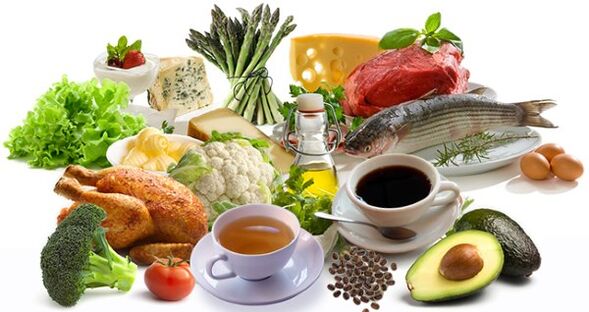
The main principle of the Japanese diet is to accelerate and optimize the metabolism in the body of a person who wants to lose weight. There is nothing in common with the cuisine of the Land of the Sun that arises in this diet. It is designed for people who do not have chronic diseases and there are some contraindications when using such a diet.
Its use is prohibited:
- Peoplewho have chronic diseases (diabetes, cardiovascular problems, interruptions in the functioning of the kidneys, liver, stomach);
- PREGNANTand nursing;
- For female personsduring the period of endocrine restructuring of the body, namely during menopause and after abortion, abortion;
- peoplewho play sports or have active physical activity.
The Japanese diet has lists of allowed and forbidden foods.
Allowed fruits are:
- apples,
- Pear,
- plums,
- Kiwi,
- Citrus fruits (except lemon),
- Plums,
- sweet cherry.
You can not eat bananas, grapes, dates and lemons. The use of dishes with flour is strictly prohibited, except for rye and bran crackers.
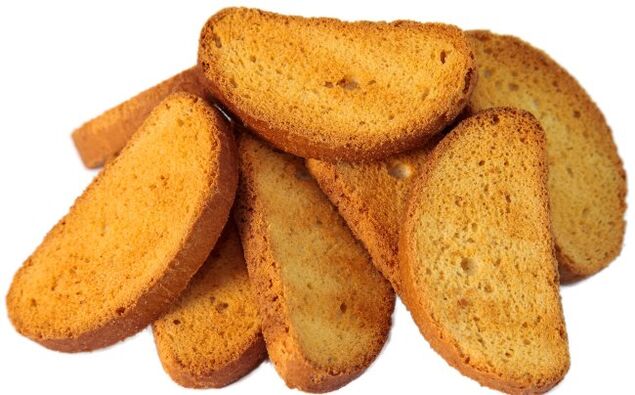
The list of allowed products includes:
- Fresh vegetables;
- Tomato juice;
- Unrefined vegetable oil, preferably first pressing;
- Kefir or yogurt, preferably natural homemade;
- Beef, chicken, fish fillets, preferably fresh, not frozen;
- Chicken or quail eggs;
- Black coffee;
- Pure loose leaf tea without additives or flavorings;
- Non-carbonated water.
Nutrient distribution in the Japanese diet
The most caloric products of this diet are chicken eggs, meat and dairy products. Carbohydrates consumed are presented in bread crumbs, in some types of vegetables, and fats - in unrefined vegetable oil. The preference in the Japanese diet is best given to olive oil, using it when dressing salads or for cooking.
The consumption of fruits and vegetables in some days is not limited. These foods are rich in fiber, which is good for the stomach and intestines.
During the diet, it is better to use still, boiled water in the amount of up to 2 liters per day. In addition, you can enjoy tea and coffee: coffee - natural instant or in beans, tea - without flavoring. All high quality. Green tea plays an important role in the Japanese diet. It contains large reserves of proteins, contains antioxidants.
The Japanese diet is designed in such a way that the metabolic process is accelerated. It completely excludes the use of salt in the first days and allows its use in the last days.
It should be remembered that the Japanese diet is not balanced and it is preferable to use it for no more than two weeks.
sample menu
| day | breakfast | dinner | Evening |
|---|---|---|---|
| A | Organic coffee without sugar |
|
Fish in any form |
| 2 | Natural coffee and crackers without sugar |
|
|
| 3 | Natural coffee and crackers without sugar | Zucchini fried in oil |
|
| four | Organic coffee without sugar |
|
Fruit |
| 5 | Carrots | Fish in any form | Fruit |
| 6 | Organic coffee without sugar |
|
|
| 7 | Tea without sugar |
|
Any of the dinner options except day 3 |
| eight | Organic coffee without sugar |
|
|
| 9 | Carrots |
|
The fruits are different |
| ten | Organic coffee without sugar |
|
The fruits are different |
| eleven | Natural coffee and crackers without sugar | Zucchini fried in oil |
|
| 12 | Natural coffee and crackers without sugar |
|
|
| 13 | Organic coffee without sugar |
|
Fish in any form |
| fourteen | Coffee without sugar, you can cream |
|
|
The menu shown in the table is an example. It should be borne in mind that the Japanese diet is quite complex, therefore, when following it, it is necessary to take into account the general condition of a person.
If a dieter does not feel well or weak, then it is not worth continuing to lose weight.
Japanese diet recipes
Breakfast options
Option 1 - Natural coffee without sugarOption 2 - Herbal teaOption 3 - salad with fresh carrots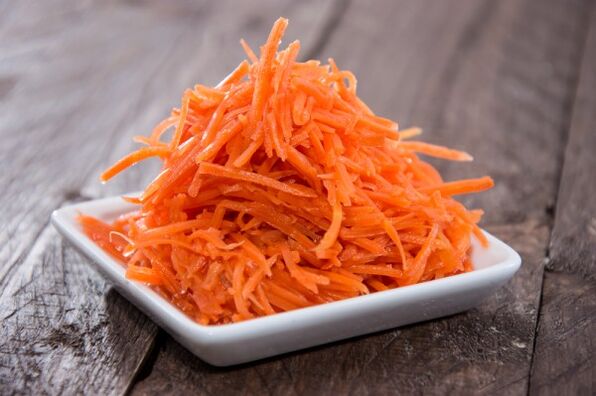
Take a large carrot and rub it on a medium grater. Coat the salad with lemon juice and vegetable oil (preferably olive). Salad with salt or add sugar is not necessary.
Dinner options
The lunch of the Japanese diet includes the use of meat dishes and salads.
Option 1 - fried zucchini
We take a large fresh zucchini, cut it into small circles, there is no need to add salt.
Pour unrefined vegetable oil into the pan, wait for the pan to heat up. Fry the pumpkin circle on both sides until golden brown.
Option 2 - Fish with vegetables in the ovenCut the fish into pieces, no salt is needed (in the last days of the diet, you can add a little salt). We clean the carrots and cut them into small strips. Cut red pepper, eggplant into small pieces.
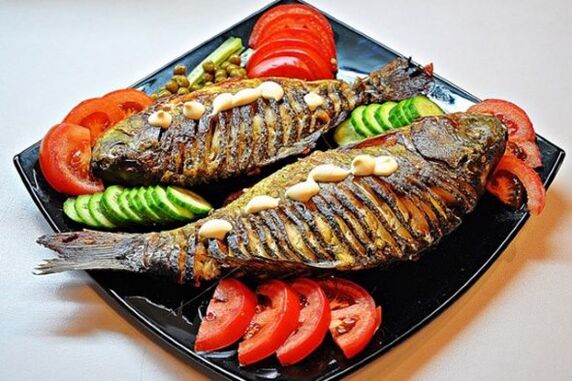
Heat the oven to 180°. We put a part of the fish on the paper, sprinkle it with lemon juice, put vegetables on the fish, close the paper and put it in the oven for 30 minutes.
Option 3 - Chicken diet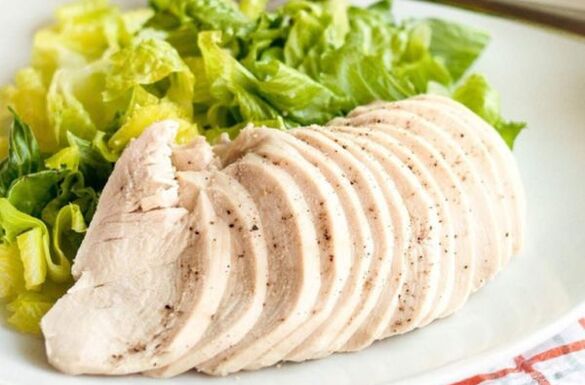
Remove the skin from the chicken thigh or the whole carcass. Rinse the chicken meat with the skin and pour it completely with plain water, let it boil. After the water with the chicken boils, the first liquid must be drained. Then again pour the meat with water and boil. You need to cook the chicken until it is done. Salt and add any spices is not necessary.
Dinner options
Option 1 - Cabbage saladDivide the head of white or Beijing cabbage into two parts. Boil a little part. Finely chop both parts and squeeze.
Coat the salad with olive or sesame oil.
Option 2 - Fruit salad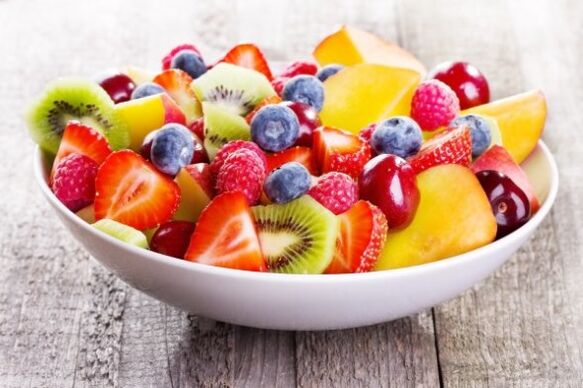
Wash and peel the apple, orange and kiwi. Cut everything into medium cubes, mix and sprinkle with lemon juice.
Option 3 - Tilapia stewPeel a piece of tilapia fish and rinse it under water. Place a piece of fish in a deep pan and pour water up to half of the carcass. Boil the fish over low heat, covered with a lid, for 10 minutes. Then you have to throw lavrushka and some peppercorns on the plate. Adding salt is prohibited. Replace salt with lemon juice. Then boil the fish until done.
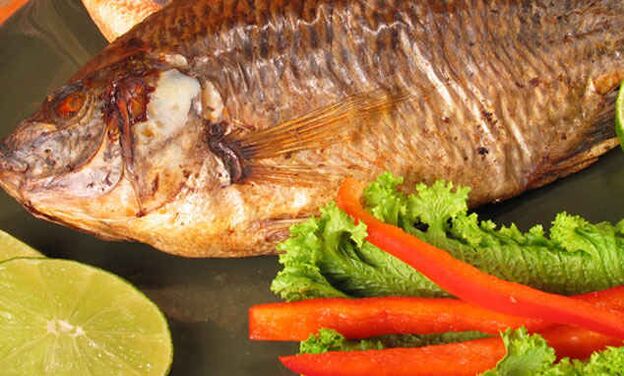
Japanese recipe with diet meat
Among many women, the Japanese diet has become popular, the recipes and dishes of which differ from others in their low calorie content and lack of salt.
It is necessary to completely adhere to the diet and eat only those dishes that are offered. On certain days, during weight loss, you can eat turkey, chicken, beef. Here are some recipes you can use these days.
Be it turkey
It is necessary to take a turkey fillet weighing up to 250 g and roll it in a meat grinder. You can add minced onions and spices to your taste. It is not necessary to salt the minced meat.
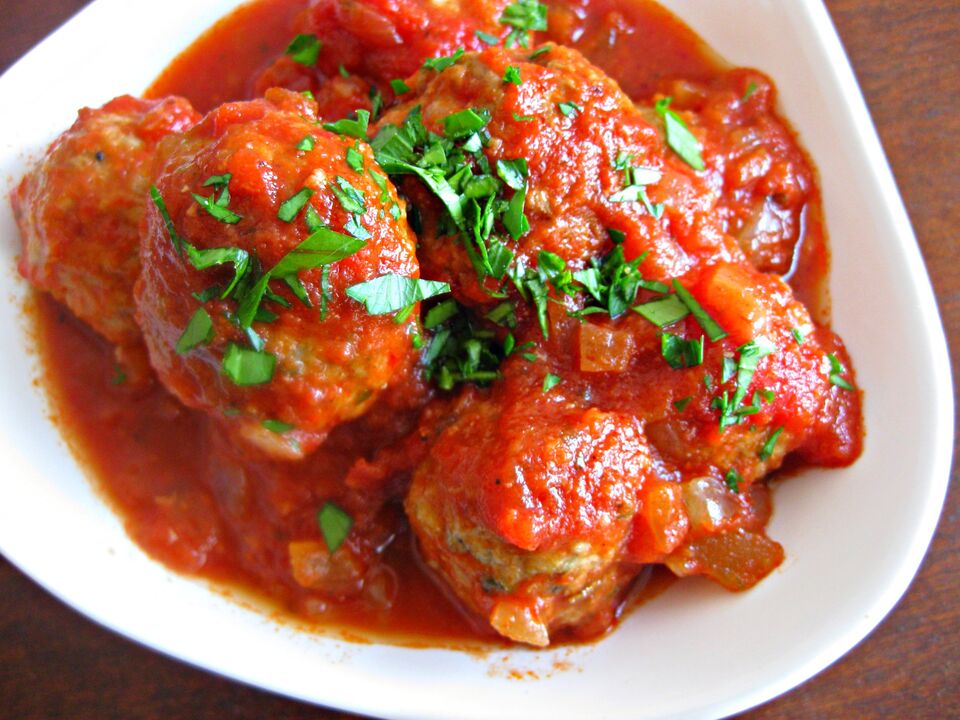
In a separate pan, it is necessary to boil water and pour a few drops of vegetable oil into it. In the finished boiling water, you need to throw small balls of minced meat and boil them for 20 minutes. Ready meatballs can be sprinkled with parsley or herbs.
Chicken cutlets in the oven
We take 500 g of chicken fillet and cut it into small cubes of maximum 1 cm. Mix the obtained mass with grated rosemary, carrots, onions and eggs. Make small meatballs from the minced meat and put them in a boat with foil. It is important to make such a boat so that the fillet juice does not flow down the sides into the oven.
It is better to cover the patties with foil and top to avoid baking the product. Cook the dish in a preheated oven for 30 minutes.
How to cook fish. Recipe
In the Japanese diet, fish is a fairly common staple. It is better to boil it or bake it in the oven, although the use of a fried product is not prohibited. The only rule when preparing a dish is the absence of salt, spices for fish and spices are not prohibited.
Baked trout
Fresh fish must be cleaned, cut into pieces, washed and dried. After the fish fillet dries a little, it should be rubbed with spices and seasonings. To improve the taste, pour lemon juice over the fish. Inside the fish, you can put chopped greens or onions.
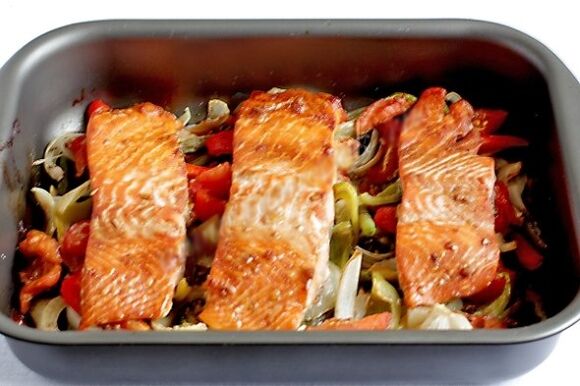
Before placing the product in a preheated oven, it should be laid out on metal foil, securing its edges so that the fish juice does not flow. When the oven heats up to 190 °, put noodles with the fish and cook for 30 minutes.
Cooking vegetables and fruits. Recipe
Vegetables and fruits can be eaten independently, regardless of the quantity. In addition, they can become ingredients in simple delicious recipes.
baked apples
Fruits should be cut into large slices and sprinkled with cinnamon. Apples can be baked in the oven or in the microwave. To do this, the cut slices should be placed on a suitable plate and placed in an oven preheated to 180 °. Bake the apples for 15 minutes.

Crispy cabbage in an egg
Cut the cauliflower into small pieces and add spices, except salt. Beat the egg in a separate bowl. Each piece of cauliflower should be dipped in an egg and fried in vegetable oil in a pan over low heat.
Are snacks possible in the Japanese diet? What can you snack on?
Eating food during the Japanese diet is acceptable. But undesirable. With a strong feeling of hunger, it is enough to drink a glass of water, green tea or strong coffee.
Getting out of the Japanese diet. Recipes of dishes
When the Japanese diet comes to an end, it is necessary to perform another ideal way out of it. All measures must be followed to maintain the result.
It is important not to immediately switch to your usual diet, otherwise everything will end badly: you can gain not only the lost weight, but also overdo the correction.
The main principles of exiting the diet are:
- Introduce productsyou should gradually add to your usual diet, slightly increasing calories and equalizing the ratio of proteins, fats and carbohydrates;
- Release periodit must be at least 14 days;
- quantityprotein foods cannot be reduced;
- Dinner and lunchin the first days of the exit, it is better to keep the same as with the diet, adding dishes in the morning;
- Keeplimit the use of salt.
To expand your breakfast options, some recipes may be helpful.
Omelet with vegetables
Beat 2 eggs and add 50 g of milk to the mass. Heat the pan and slightly fry half of the bell pepper cut into 1 cm squares in vegetable oil, put the eggs in the pan and cover with a lid. Reduce the heat on the stove to a minimum. The omelet takes 10 minutes to cook. A few minutes before the end of cooking, you should sprinkle the omelette with green onions and finely chopped herbs.

The way out of the Japanese diet is also divided into several stages. Experts recommend introducing any high-calorie product in small quantities, giving the body time to recover. The longer you observe the output, the better and stronger the result will be.






























